Publication on Korea
Korean Essentials Series
The Korea Essentials Series is co-published by the Korea Foundation and SeoulSelection to provide international readers with a basic understanding of the arts andculture of Korea. The content of this series is based on the articles and features publishedin Koreana, the Korea Foundation’s quarterly journal with in-depth coverage of variousaspects of Korea’s cultural traditions.
-
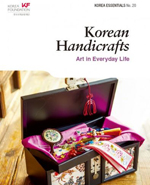 Korea Essentials Series 20 - Korean Handicrafts: Arts in Everyday Life
Korea Essentials Series 20 - Korean Handicrafts: Arts in Everyday Life
- 2014 / 108Pages / 128x180(mm)
- ISBN: 978-89-97639-54-0
This book was written as an introduction to Korean handicrafts andthe manner in which theyhave captured Korea's unique culture and way of life over the millennia. Itschapters examine thecharacteristics of these works as well as their history-the most representativepieces handed down fromthe past, along with the lives of the people who make them.
-
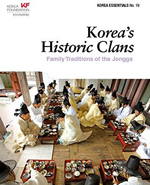 Korea Essentials Series 19 - Korea’s Historic Clans: Family Traditions ofthe Jongga
Korea Essentials Series 19 - Korea’s Historic Clans: Family Traditions ofthe Jongga
- 2014 / 108Pages / 128x180(mm)
- ISBN: 978-89-97639-53-3
A jongga is a family that can trace its line of progenitors back toa single distinguishedancestor. Reviewing the history of jongga culture and examining what it is todaycan teach a personthings about the Korean spirit and culture that often elude the eye.
-
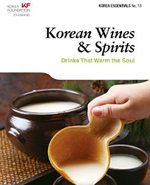 Korea Essentials Series 18 - Korean Wines & Spirits: Drinks That Warm theSoul
Korea Essentials Series 18 - Korean Wines & Spirits: Drinks That Warm theSoul
- 2014 / 108Pages / 128x180(mm)
- ISBN: 978-89-97639-52-6
Koreans enjoy alcohol as a means to make merry and build cohesionbetween family, friendsand coworkers. But alcohol’s place in Korean culture goes far beyond that. Thisbook introduces varioustypes of alcohol and the history of traditional Korean alcoholic drinks.
-
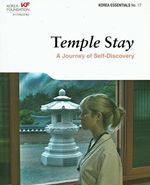 Korea Essentials Series 17 - Temple Stay: A Journey of Self-Discovery
Korea Essentials Series 17 - Temple Stay: A Journey of Self-Discovery
- 2014 / 108Pages / 128x180(mm)
- ISBN: 978-89-97639-49-6
A Temple Stay is a short sojourn at a temple where one goes tofollow monastic rules oflife. This book uses simple terms to explain the meaning of some of the ritualsthat one may encounterat a temple stay and gives insight into the history, philosophy and practices ofKorean Buddhism.
-
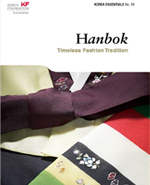 Korea Essentials Series 16 - Hanbok: Timeless Fashion Tradition
Korea Essentials Series 16 - Hanbok: Timeless Fashion Tradition
- 2013 / 108Pages / 128x 180(mm)
- ISBN: 978-89-97639-41-0
The book offers various insights about the characteristics,aesthetics, and history ofHanbok, the traditional costume of Korea. It also describes the current statusof Hanbok, which hasrecently been in the spotlight thanks to the spread of Hallyu, and its risingpopularity on the globalfashion scene.
-
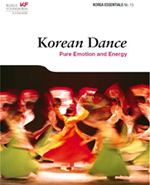 Korea Essentials Series 15 - Korean Dance: Pure Emotion and Energy
Korea Essentials Series 15 - Korean Dance: Pure Emotion and Energy
- 2013 / 98Pages / 128x 180(mm)
- ISBN: 978-89-97639-40-3
The book provides an overview of the aesthetics and concepts behindKorean dance, along withintroducing the characteristics of court and folk dances, and the development ofmodern Korean dance,thereby enabling readers to have a better understanding and appreciation ofKorea’s dance culture.
-
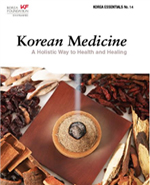 Korea Essentials Series 14 - Korean Medicine: A Holistic Way to Health andHealing
Korea Essentials Series 14 - Korean Medicine: A Holistic Way to Health andHealing
- 2013 / 98Pages / 128x 180(mm)
- ISBN: 978-89-97639-39-7
The book describes the background of traditional Korean medicine,which has been influencedby the oriental medicine of China and Japan, but also developed its owncharacteristics, and examinesits principles of diagnosis and treatment. Of note, it makes Korean medicinemore accessible to readersby introducing the efforts of Korean medicine to modernize and globalize itself,rather than simplyadhering to its longtime practices.
-
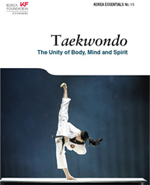 Korea Essentials Series 13 - Taekwondo: The Unity of Body, Mind and Sprit
Korea Essentials Series 13 - Taekwondo: The Unity of Body, Mind and Sprit
- 2013/ 116Pages / 128x 180(mm)
- ISBN: 978-89-97639-37-3
An introductory book on Taekwondo, an indigenous martial arts formof Korea, it is usefulfor beginners who have just started to learn about the dynamics and intricacy ofthis traditional Koreanmartial arts as well as practitioners who seek a deeper understanding about itsmyriad details. The bookdescribes the background and development of Taekwondo, along with explaining thecharacteristics ofTaekwondo as a martial arts form that has rapidly spread and taken root in allcorners of the world,which includes formal competitions at the Olympics and various other sportsevents.
-
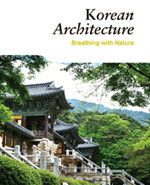 Korea Essentials Series Ⅻ - Korean Architecture : Breathing with Nature
Korea Essentials Series Ⅻ - Korean Architecture : Breathing with Nature
- 2012 / 120 pages / 128x 180(mm)
- ISBN: 978-89-97639-23-6
This book offers an introduction to Korea’'s abundant and uniquearchitectural past andpresent, combining explanations of the principles behind Korean architecturewith introductions to someof the country’'s finest buildings and structures. It explains some of theideologies and perspectivesthat form the foundation of Korean architectural tradition and outlines thehistory of Koreanarchitecture, from the first architectural traces of dugouts and lean-tos to theincreasinglysophisticated wooden frames and technologies. The book also highlights ten ofKorea’'s best-known andmost signifi cant traditional buildings, ranging from Buddhist temples to royalpalaces, Confucian royalshrines, landscaped literati gardens to “"Enlightenment”"-era fortresses.
-
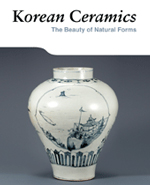 Korea Essentials Series Ⅺ - Korean Ceramics : The Beauty of Natural Forms
Korea Essentials Series Ⅺ - Korean Ceramics : The Beauty of Natural Forms
- 2012 / 108 pages / 128x 180(mm)
- ISBN: 978-89-97639-07-6
In human history, ceramics are the oldest “"tools of civilization”"and are amongst thetools closest to us in our daily lives. Ceramics have developed in closeconnection with our dietaryculture and played a major role in refi ning the said culture. Ceramicsrepresent the emotions andliterary trends of a particular age—in a sense, they are like a moving artgallery or history museum.That is why ceramics are not only an important vehicle of culture, but also aleading cultural medium oftoday. Korea’'s traditional ceramic wares serve as a barometer for understandingKorean culture in thatthey most accurately reflect Korean aesthetics and the Korean worldview. Thisbook seeks to explore theideas and richness of international ceramic culture as well as the trends andways in which newlydeveloping ceramic innovations are unfolding. From the celadon of the GoryeoDynasty (918-1392) to thewhite porcelain of the Joseon Dynasty (1392-1910), we will examine how Korea’'sceramics traditionbegan, how it developed, and what makes it so special.
-
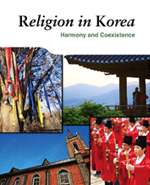 Korea Essentials Series Ⅹ - Religion in Korea : Harmony and Coexistence
Korea Essentials Series Ⅹ - Religion in Korea : Harmony and Coexistence
- 2012 / 104 pages / 128x 180(mm)
- ISBN: 978-89-97639-05-2
Korea is a remarkable case study in religious coexistence. Eventhough only about half thecountry identifies as religious, the half that does displays a remarkablediversity of both indigenousand imported faiths, including Buddhism and Christianity (of both the Catholicand Protestantvarieties). Korean religious pluralism is no recent phenomenon. Koreans haverespected religiousdiversity since ancient times. Indeed, if there is one overriding religioustendency in the Koreanpopulation, it is a preference for syncretism, of fi nding essential and commontruths amidst diverseand often competing doctrines. Current Korean leaders have continued makingefforts to furtherinter-faith understanding. This book surveys the rich religious and spiritualtapestry that iscontemporary Korea. We begin with the earliest of Korean faiths—-the shamanismthat prehistoric Koreansbrought with them as they migrated to the peninsula from Central Asia—-andcontinue on to today’'s mostprominent faiths: Buddhism, Christianity, and Confucianism. Korea has givenbirth to a large number ofindigenous faiths, which are also covered as well.
-
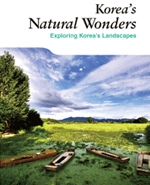 Korea Essentials Series Ⅸ - Korea's Natural Wonders : Exploring Korea'sLandscapes
Korea Essentials Series Ⅸ - Korea's Natural Wonders : Exploring Korea'sLandscapes
- 2012 / 104 pages / 128x 180(mm)
- ISBN: 978-89-97639-04-5
For those living in Seoul, it’'s easy to conclude that the urbanswath of concrete grays isall there is to see in Korea. Yet those who look up can glimpse crests ofmountains, seemingly farawayyet thankfully everpresent. Such is Korean nature—never imposing orintimidating, forever patientlywaiting for us to take notice. This book hopes to encourage more readers to takenotice of this subdued,yet spectacular, beauty. Take a look around at the ubiquitous mountains that dotthe peninsula or spendthe afternoon at any one of Korea’'s Ramsarregistered inland wetlands. Head outto one of Korea’'s seasfor more exposure to local flora and fauna. If you’'re in the capital city, gofor a walk along theHangang River. If you can spare a few days, go for an excursion to Jeju-do,Korea’'s biggest island,where it has the popular trekking trails named “"Olle,”" meaning, “"Won’'t youcome?”" In a sense, thisbook extends the same welcome to its readers. Won’'t you come to Korea andexperience the wonders of itsnature?
-
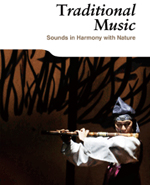 Korea Essentials Series VIII - Traditional Music : Sounds in Harmony withNature
Korea Essentials Series VIII - Traditional Music : Sounds in Harmony withNature
- 2011 / 109 pages / 128x 180(mm)
- ISBN: 978-89-91913-88-2
Music has played and continues to play a vital role in Koreansociety, providing a rich veinof material as a dynamic part of the nation’s culture. Korean music’s historyreflects active engagementwith surrounding cultures, as well as indigenous creativity and innovation.Korea is heir to one of theworld’s oldest repertoires of notated music. Over the past several hundredyears, virtuosic instrumentalgenres based upon the music of shamanist rituals and agricultural ceremoniesdeveloped into highlysophisticated art forms. This book will examine the development of Koreantraditional music, looking atwhat makes it unique, surveying its wide variety of genres, and reviewing itsdramatic history as an artform.
-
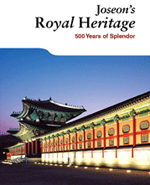 Korea Essentials Series VII - Joseon’s Royal Heritage : 500 Years ofSplendor
Korea Essentials Series VII - Joseon’s Royal Heritage : 500 Years ofSplendor
- 2011 / 121 pages / 128x 180(mm)
- ISBN: 978-89-91913-87-5
The Joseon dynasty ruled Korea for over half a millennium,bequeathing to Korea aconsiderable cultural heritage. This book will examine three of the better-knownareas of Joseoncultural heritage: royal palaces, royal tombs, and the Annals of the JoseonDynasty. Each of thesetreasures, deeply imbued with Joseon’s Confucian culture, reveals unique aspectsabout the kingdom andits legacy.
-
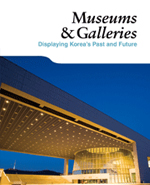 Korea Essentials Series VI - Museums & Galleries : Displaying Korea’sPast and Future
Korea Essentials Series VI - Museums & Galleries : Displaying Korea’sPast and Future
- 2011 / 129 pages / 128x 180(mm)
- ISBN: 978-89-91913-86-8
Korea is currently home to around 300 registered museums and a largenumber of privategalleries. There are now 11 national museums in provincial cities throughoutKorea, unified by the hubthat is Seoul’s iconic National Museum of Korea, completed in 2005, while thelarge number of regional,art, specialized and other museums continues to rise. Korea’s museums andgalleries, displayingeverything from Paleolithic relics to the latest experimental works bycontemporary artists, offerwindows onto the country’s past, present and future.
-
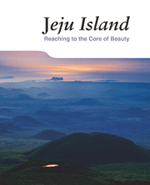 Korea Essentials Series V - Jeju Island : Reaching to the Core of Beauty
Korea Essentials Series V - Jeju Island : Reaching to the Core of Beauty
- 2011 / 140 pages / 128x 180(mm)
- ISBN: 978-89-91913-83-7
The world is taking notice of Jeju Island. Now, the firstEnglish-language book introducingits natural landscape, culture, history, and people is available to share itswonders. Featuring around200 color photographs, maps, and illustrations, this book organizes all thebeauties of Jeju, which drewrapturous praise from Nobel Prize-winning writer J. M. G. Le Clézio, into anentertaining andeasy-to-read format. Also included is useful information for foreign travelersvisiting the island,including sections on its three UNESCO natural science designations, its Olletrails, and twelve thingsto do on the island.
-
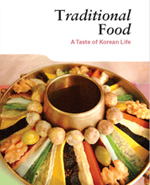 Korea Essentials Series IV - Traditional Food : A Taste of Korean Life
Korea Essentials Series IV - Traditional Food : A Taste of Korean Life
- 2010 / 132 pages / 128x 180(mm)
- ISBN: 978-89-91913-76-9
Nowadays, with healthy lifestyles and the “slow food” movementreceiving attentionworldwide, Korean cuisine is attracting keen interest as a healthy cuisine,which offers nutritionalharmony and balance. The book explores Korea’s 5,000-year-old culinary cultureand introduces readers tothe historical, cultural, nutritional, and philosophical aspects of this uniquecuisine.
-
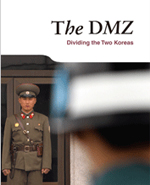 Korea Essentials Series III - The DMZ : Dividing the Two Koreas
Korea Essentials Series III - The DMZ : Dividing the Two Koreas
- 2010 / 104 pages / 128x 180(mm)
- ISBN: 978-89-91913-75-2
The Demilitarized Zone separates the Korean Peninsula into North andSouth, where communismand democracy continue to exist in mutual animosity. Nowhere is this moreapparent than at the JointSecurity Area (JSA) near the so-called “truce village” of Panmunjeom, whereSouth Korean and NorthKorean soldiers face off against each other. The book includes chapters aboutthe background of the DMZ,the Korean War, Panmunjeom and the JSA, and the natural environment of the DMZ.
-
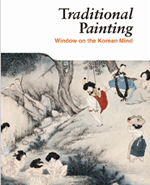 Korea Essentials Series II – Traditional Painting : Window on the KoreanMind
Korea Essentials Series II – Traditional Painting : Window on the KoreanMind
- 2010 / 132 pages / 128x 180(mm)
- ISBN: 978-89-91913-74-5
Korean painting is said to reveal a close connection with naturethat parallels the Koreanpeople’s traditional worldview. Koreans have long revered the naturalsurroundings, which is readilyevident in the subjects and style of Korean paintings. The book provides readerswith comprehensiveinformation about the traditions of Korean painting in regard to BuddhistPainting, A Scholar’s Art,Landscape Painting, Genre Painting, Portrait Painting, and Folklore Painting.
-
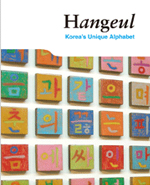 Korea Essentials Series I – Hangeul : Korea’s Unique Alphabet
Korea Essentials Series I – Hangeul : Korea’s Unique Alphabet
- 2010 / 104 pages/ 128 x 180(mm)
- ISBN: 978-89-91913-69-1
Hangeul, the indigenous writing system of Korea, is an ingeniouscreation that utilizesforward-thinking, scientific linguistic theory, and principles of Koreantraditional culture to expressthe sounds of the Korean language. The book examines the unique characteristicsof the Hangeul writingsystem, structure of the alphabet, historical process of its creation, KingSejong the Great, and itswidespread influence on Korean society.











